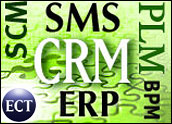
Too often channel strategies ranging from the most tactical and short-term to the most strategic and multiyear fail. Success or failure of a channel management strategy has nothing to do with the time horizon and everything to do with perspective, timing and getting away from a “one-and-done” mentality.
A channel management strategy is never done. It is an iterative process that too many sales, operations, service and marketing managers ignore. The “fix it” mentality is so pervasive that there are a few channel management software vendors surviving because they are doing the work of sales, marketing and operations.
When channel strategies implode, it’s too easy for companies to say that the business model changed and the channel strategies didn’t keep up, or that their channel partners rejected strategies because competitors were offering more margin, dollars or attention. Those are all cop-outs and speak to symptoms rather than causes.
Worst practices in channel management start when the following factors begin surfacing, and are perpetuated when companies think they can buy their way out of problems.
Worst Practices
- A “one-and-done” mentality about lead management, order capture and service. I’ve seen high-tech manufacturers in industries known from cut-throat pricing let their managers, directors and even VPs sit behind their desks all day right after putting a channel management system in place. Sure, the sales force had input at the beginning, but once the system is launched, organizations tend to breathe a collective sigh of relief and settle back into routines. So organizational life goes on before, except that now there is a milion-dollar system in place and the people who were so passionate about it have moved on to another project. Nothing has changed. While usage rates hover around 30 percent, no one has the time or incentive (read bonuses) to change things for the better.
- Losing touch with sales. Ironically, the manufacturers who do have initial success with channel strategies take their best managers, directors and VPs and turn them into firefighters first and long-term business process owners second. A top director at one manufacturer spearheaded a successful pricing program for indirect channels that included streamlining special pricing requests. The system had major integration challenges with SAP and Oracle ERP instances, and this high-achieving director worked diligently with channel management, system integration and IT managers to solve the problem. The result was a system that ran flawlessly. The trouble was that this marketing director was so strong at organizing the system that he neglected to devote time to sales. The result: the most effective director in the company lost touch with sales’ needs.
- Lack of integration expertise. With the pipeline for channel management deals slowing down at the beginning of this year, most struggling channel management vendors have a tendency to overstate their ability to handle integration. Don’t just check the references that vendors give you: Go find the references they don’t want you to know about, because their failures will teach you more than their successes. One manufacturer recently did this and found that error messages — which had been promised for one customer’s specific format — weren’t in place over a year later. That bumped the vendor down three levels on the short list.
- Vendors waiting for the M & A train. I’ll go out on a limb here and predict that there are going to be more than forty different mergers and acquisitions throughout all of enterprise software, and at least three that will realign CRM overall and channel management specifically. So beware of the vendors who are awaiting M & A. Back away from vendors that show signs of battles with investors and boards; rapid turnover at the top; and trading below cash. Vendors that are on the market but have the following positives may survive even if integrated to another company: a large and profitable customer base; process-centric applications that align with how people work; a strong cash position; and established sales and channel organizations.
- Ignoring the W2. When it’s all said and done, one VP of sales just nailed it with the comment, “So what will these channel strategies do to my W2?” The combination of streamlining manual processes and automating them to make more sales happen must reverberate on the W2s of the sales people who depend on them. You may argue that channel strategies are just giving sales, operations and service the tools to do what they are already paid to do. But anyone involved with sales, marketing and channels is dollar-driven — and W2s are how these people keep score. Want to win with your channel strategies? Then rock the W2s of the channel members you serve.
Bottom Line
This year more manufacturers will become channel-driven than ever before. In previous years the U.S. Department of Commerce has said that 70 percent of all revenue in distribution will come from indirect channels. More manufacturers have failed than succeeded trying to tap into that potential revenue stream.
Consider why companies have failed and plan accordingly. But be sure to ask, “How will this system grow the W2s of the people who will use it every day?” Then you can sell with confidence to the most deal-savvy of sales VPs out there.
Louis Columbus, a CRM Buyer columnist, is a former senior analyst with AMR Research. He currently works in the software industry and recently published the e-book Best Practices in Industry Analyst Relations, which is available on Amazon.com.





































Social CRM
See all Social CRM